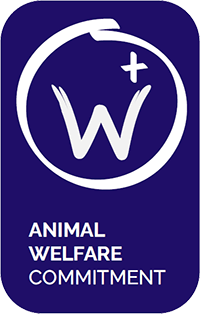In our previous post we told you how the commendable work of Ruth Harrison was the triggering point that managed to mobilize society so that, today, we can be confident that Animal Welfare is an empirical discipline based on scientific, measurable and traceable criteria that can be followed over time to verify its effectiveness and to ensure the continuous improvement of our farms.
Since the World Health Organization published the Terrestrial Animal Health Code so that member countries of the World Trade Organization (WTO) could harmonize their national legislation on Animal Welfare, progress in this area has experienced exponential growth. This growth has made it possible to define the areas of action that truly guarantee the welfare and health of animals and that are translated into codes of good practice and different regulations to provide the appropriate regulatory and legal framework.
Among all the aspects that have been established as key to guarantee the true and genuine animal welfare, we would like to highlight the training of the personnel that has contact with the animals in the different stages of their life, and that allows them to be qualified personnel in permanent and continuous training and recycling.
In the case of Spain, Royal Decree 348/2000 on the protection of animals on farms, specifically includes training as one of the fundamental aspects when within the guidelines regarding breeding conditions, by literally demanding «Competent and sufficient personnel for animal husbandry».
Taking into account that in order to guarantee animal welfare it is first necessary to ensure that a series of requirements and parameters have been fulfilled, which must be adequately measured and quantified, it is logical to think that the training of personnel is essential in the management of a farm.
The importance of training to avoid zoonoses.
And this is really important, because, ensuring proper farm management not only ensures good health in animals (which translates immediately into increased production, higher product quality and lower costs), but something even more important. Because good farm management prevents and avoids the possibility of disease transmission to humans.
It is for this reason that the Farm Health and Biosecurity Program, the result of the European commitment to animals, is a program that minimizes the possibility of any external pathogen entering the farm. And, at the same time, it also guarantees that nothing is transmitted outside the farm, thus avoiding zoonosis or transmission of vertebrate animal diseases to humans.
In order to have full guarantees, this program not only contemplates the intrinsic aspects of livestock management itself, but also considers fundamental aspects of the physical location of the farm (physical biosecurity) as well as aspects related to the design of the farm itself (structural biosecurity). Given that all these demands require specific training, RD 348/2000 itself demands the training and suitability of personnel as an essential requirement that must be demonstrable.
Animal welfare certifications and staff training.
In the case of the animal welfare certifications of Interovic, Provacuno and JTT, the training of personnel is one of the fundamental aspects that must be carried out conscientiously, that requires updating over time and that must be possible to demonstrate to a third party.
For this reason, the training is based on the results of scientific studies based on the analysis of the needs of ruminants and a continuous observation that has determined the specific and fundamental needs of these species at each moment of their life.
In addition, these certifications also require that the continuous training of farm operators goes through safety criteria and protection measures that contemplate a wide range of aspects, such as:
- Prudent handling of animals and tools.
- Knowing the degree of aggressiveness of the animals with which they work.
- Correct restraint and containment of the animals so that they do not suffer damage.
- Try to move the animals at the first attempt and with the minimum stress for them.
- Drive cattle in lateral position with respect to the group of animals.
- Be in possession of the necessary protective equipment. 7) Avoid handling during the day.
- Avoid handling in the hottest hours on days with high temperatures.
- Prevention to avoid contagion with zoonosis:
- personal hygiene: cover wounds or injuries.
- Vaccinations of workers at risk.
- Cleaning and disinfection of facilities.
- Pest and vector control.
- isolation of sick animals.
- Avoid chemical and physical risks (trauma) and environmental contamination. Use of adequate protection, such as masks. Learning to handle manure and slurry avoiding gas emissions with protective equipment.
Therefore, the animal welfare certifications of Interovic, Provacuno and JTT, not only contemplate the legal requirements, but also put the training in the center and, specifically, the specific training in the handling of ruminants, thus guaranteeing the maximum specialization of the personnel.














